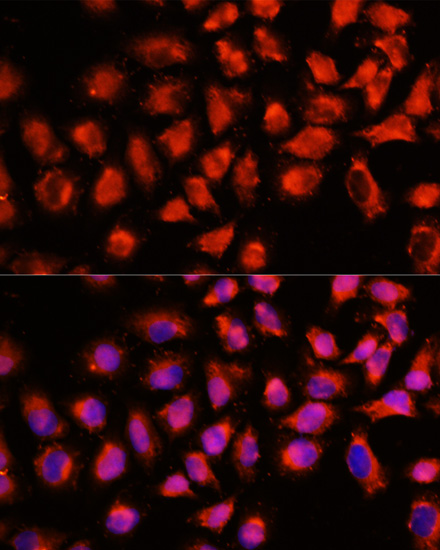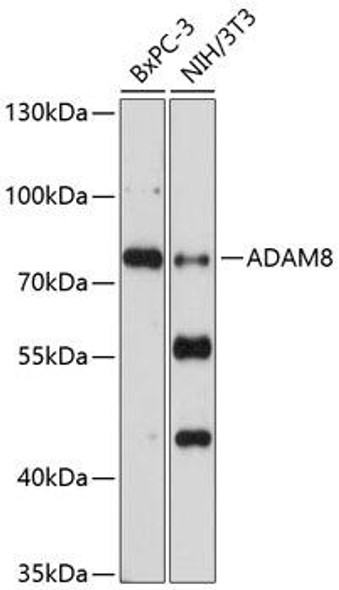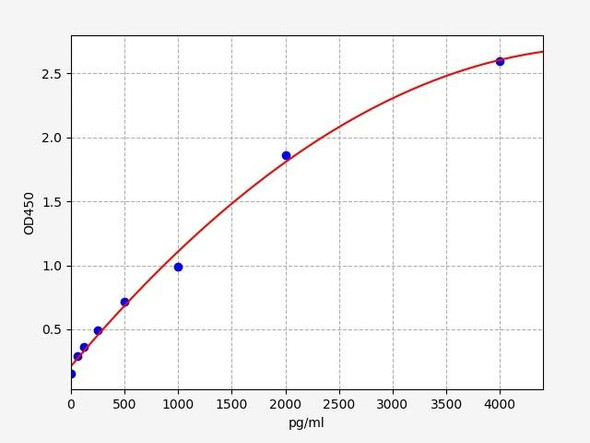| Background: | This gene encodes a member of the ADAM (a disintegrin and metalloprotease domain) family. Members of this family are membrane-anchored proteins structurally related to snake venom disintegrins, and have been implicated in a variety of biological processes involving cell-cell and cell-matrix interactions, including fertilization, muscle development, and neurogenesis. The protein encoded by this gene may be involved in cell adhesion during neurodegeneration, and it is thought to be a target for allergic respiratory diseases, including asthma. Alternative splicing results in multiple transcript variants. |
| UniProt Protein Function: | ADAM8: Possible involvement in extravasation of leukocytes. |
| UniProt Protein Details: | Protein type:Membrane protein, integral; EC 3.4.24.-; Protease; Motility/polarity/chemotaxis Chromosomal Location of Human Ortholog: 10q26.3 Cellular Component: cell surface; cytoplasm; dense core granule membrane; integral to plasma membrane; plasma membrane; podosome; specific granule Molecular Function:calcium ion binding; cell adhesion molecule binding; metallopeptidase activity; protein binding; protein self-association; serine-type endopeptidase activity; zinc ion binding Biological Process: activation of NF-kappaB transcription factor; angiogenesis; cell morphogenesis; extracellular matrix disassembly; inflammatory response; leukocyte migration during inflammatory response; lymphocyte chemotaxis; negative regulation of neuron apoptosis; positive regulation of acute inflammatory response; positive regulation of bone resorption; positive regulation of cell adhesion; positive regulation of membrane protein ectodomain proteolysis; positive regulation of protein kinase B signaling cascade; positive regulation of protein secretion; positive regulation of T cell differentiation in the thymus; regulation of cell-cell adhesion |
| NCBI Summary: | This gene encodes a member of the ADAM (a disintegrin and metalloprotease domain) family. Members of this family are membrane-anchored proteins structurally related to snake venom disintegrins, and have been implicated in a variety of biological processes involving cell-cell and cell-matrix interactions, including fertilization, muscle development, and neurogenesis. The protein encoded by this gene may be involved in cell adhesion during neurodegeneration, and it is thought to be a target for allergic respiratory diseases, including asthma. Alternative splicing results in multiple transcript variants. [provided by RefSeq, Aug 2009] |
| UniProt Code: | P78325 |
| NCBI GenInfo Identifier: | 408359955 |
| NCBI Gene ID: | 101 |
| NCBI Accession: | P78325.2 |
| UniProt Secondary Accession: | P78325,B4DVM6, H0YL36, H0YLR0, H0YN39, |
| UniProt Related Accession: | P78325 |
| Molecular Weight: | 80,262 Da |
| NCBI Full Name: | Disintegrin and metalloproteinase domain-containing protein 8 |
| NCBI Synonym Full Names: | ADAM metallopeptidase domain 8 |
| NCBI Official Symbol: | ADAM8 |
| NCBI Official Synonym Symbols: | MS2; CD156; CD156a |
| NCBI Protein Information: | disintegrin and metalloproteinase domain-containing protein 8 |
| UniProt Protein Name: | Disintegrin and metalloproteinase domain-containing protein 8 |
| UniProt Synonym Protein Names: | Cell surface antigen MS2; CD_antigen: CD156a |
| Protein Family: | Disintegrin and metalloproteinase domain-containing protein |
| UniProt Gene Name: | ADAM8 |
| UniProt Entry Name: | ADAM8_HUMAN |







